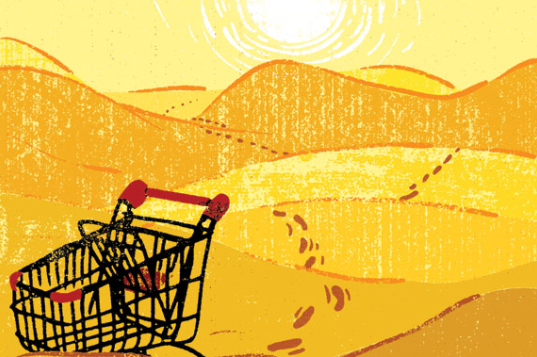By Hunter Langley
Obesity rates have skyrocketed over the past 50 years. Over 70 percent of adults over the age of 20 are listed as overweight or obese as of 2014, according to the Centers for Disease Control (CDC). Much of this can be attributed to the American diet, of which fast food is a staple.
The obvious solution would be to eat more fresh and healthy food on a regular basis. Unfortunately for 11 percent of the land area in Washington D.C., mostly in Wards 7 and 8, this is close to impossible.
Residents of those areas are living in a health nightmare known as a food desert. A food desert is an area that meets these three criteria: the walking distance to a grocery store is more than half a mile, over 40 percent of households have no computer available, and the median household income is less than 185% of the federal poverty level for a family level. This adds up to 26% of households with children being unable to afford enough fresh and healthy food.
A 41-year case study ranging across 5 different countries (US, UK, Canada, Australia and New Zealand) concluded that lower prevalence of grocery stores is directly related to increased rates of obesity and lower income people particularly minorities. The Canadian study found that in low-income areas there are half as many grocery stores and three times the amount of convenience stores.
The main problem is that when grocery stories are replaced with convenience stores, a lack of access to unhealthy food and wide access to unhealthy food follows. This creates an addiction to the unhealthy food and makes it harder for grocery stores to justify putting a store in a food desert. Some studies have found that when a grocery store is introduced to a food desert area the eating habits of the individuals do not change.
Philadelphia supermarket owner Jeff Brown has taken on the challenge of putting his stores in Philadelphia food deserts and making up the cost through efficient placement and applying for tax breaks. He is able to operate seven profitable stores in low-income areas and he, in turn, is able to give the local population sustainable jobs and a path to work their way up the chain.
Back home in D.C. Walmart was set to take on the responsibility of opening two stores in Southeast Washington as part of their agreement with the city to open five stores in the District. Instead, after building the other three stores in the wealthier parts of D.C., they backed out of the two stores they promised Anacostia area residents because they were afraid it would not be profitable enough for them.
At this point, it might seem like a helpless situation for residents in these areas looking for fresh produce, but it is not. The city council passed a bill that can prevent new food deserts from forming and make sure that the areas already affected cannot get worse by preventing grocery stores from being turned into another type of store.
In Los Angeles, Hack for LA has created a website where residents can find the spots closest to them with healthy fresh produce. D.C. Central Kitchen is moving fresh produce to the food deserts. Another group called Up Top Acres that builds full “farms” on top of roofs in D.C., which is an easy and convenient way to access fresh produce.

